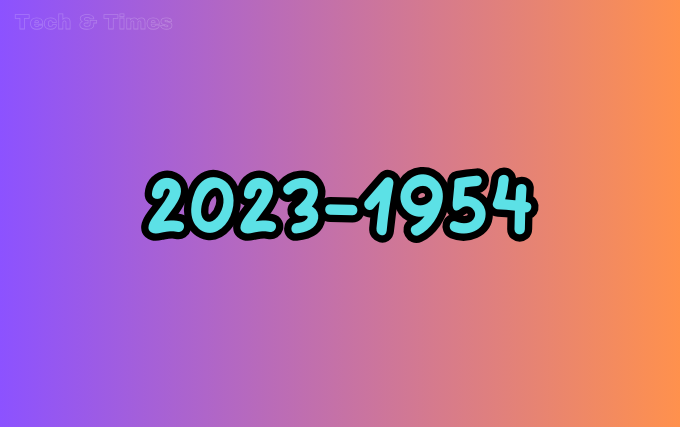One crisp autumn evening, I found myself lost in an old family photo album. Among the yellowed, black-and-white images, a snapshot from 1954 caught my attention. It depicted a moment in time that seemed far removed yet oddly familiar. As I continued flipping through the pages, I couldn’t help but draw comparisons between the world in 1954 and the year 2023. Despite the leaps in technology and cultural shifts, some parallels stood out, leading to a fascinating exploration of how much has changed and what remains timeless.
The Significance of 1954
1954 was a year of notable global events and cultural changes. The post-World War II era saw nations rebuilding and redefining their identities. In the United States, the Civil Rights Movement began gaining traction, especially with the Supreme Court’s decision in Brown v. Board of Education, which ruled that segregation in public schools was unlawful. Internationally, the Geneva Accords led to the division of Vietnam, and the launch of the USS Nautilus, the first atomic-powered submarine, marked a new chapter in naval history.
Technological Progress
In 1954, technology was advancing rapidly, though by today’s standards, it was still in its infancy. The first transistor radio was introduced, making music and news more accessible to the public. Television sets were becoming common in households, revolutionizing how people consumed information and entertainment. These developments paved the way for the technological boom that would follow.
Fast forward to 2023, and we live in a world where smartphones, artificial intelligence, and the Internet of Things dominate our daily lives. The ease of accessing vast amounts of information and communicating with anyone, anywhere, is now routine. Yet, the excitement that accompanied the technological strides of 1954 mirrors the wonder we experience today as technology continues to evolve.
Cultural Changes and Social Movements
The cultural backdrop of 1954 was a mix of traditional values and emerging change. The post-war economic surge fueled the growth of suburban living, with families moving to newly developed areas, embodying the American Dream. Rock ‘n’ roll began its rise, with Elvis Presley recording his first commercial single, signaling a new era in music.
In 2023, culture and society are driven by diversity and the ongoing quest for equality. Social movements advocating for gender equality, LGBTQ+ rights, and racial justice are at the forefront, reminiscent of the civil rights struggles of the 1950s. The role of social media in rallying and amplifying these causes is akin to how television and radio once spread new ideas and cultural waves in 1954.
Scientific Breakthroughs
1954 witnessed pivotal scientific breakthroughs. The identification of the DNA double helix structure by James Watson and Francis Crick in 1953 set the stage for major breakthroughs in genetics and biotechnology. This finding transformed our understanding of life and heredity, leading to significant developments in medicine and agriculture.
In 2023, we’re reaping the benefits of years of scientific research. Technologies like CRISPR gene editing and progress in renewable energy are built on the knowledge from the past. The excitement around these innovations is similar to the awe that greeted the scientific discoveries of 1954.
The Human Experience: Personal Narratives
In both 1954 and 2023, personal stories offer insights into the human experience. My grandmother often spoke of life in the 1950s, describing a time when community bonds were strong and family gatherings were a central part of social life. She recalled the simplicity of those days when evenings were spent listening to the radio or watching the latest TV show.
Today, while the means of connection have evolved, the essence remains unchanged. Video calls now bridge distances between family members across the globe, and social media allows us to share moments instantly. Though the ways we connect differ, the fundamental need for human interaction and the importance of relationships endure.
Conclusion
Looking back at 1954 and 2023, it’s clear that while technology and society have undergone significant transformations, the core aspects of human life remain consistent. The advancements of 1954 set the stage for the innovations we benefit from today, and the cultural shifts of that time continue to influence our present social movements.
The journey from 1954 to 2023 highlights human resilience, creativity, and the unyielding drive for progress. By understanding and appreciating the past, we can better navigate the present and shape a future that honors the legacy of those who came before us. As we move forward, let’s hold on to the lessons of 1954 and strive to build a world that embraces change while upholding the enduring values of community, innovation, and connection.
